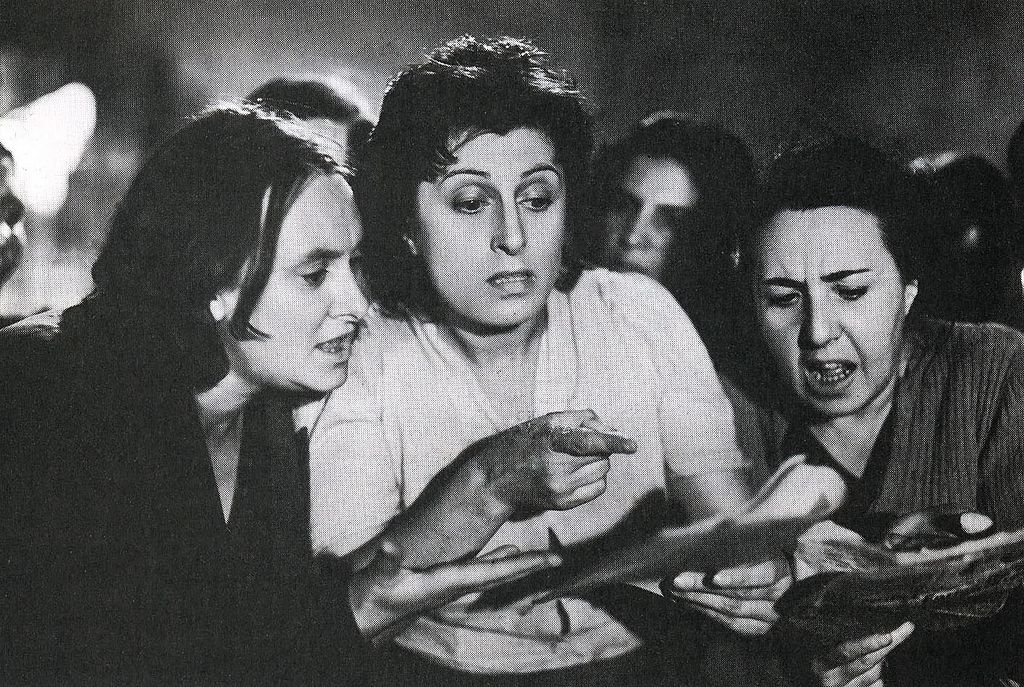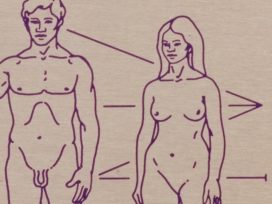Italy has never been an easy country in which to be a woman. Unfortunately, the pandemic only made things worse, modifying rather than dismantling complex structures of oppression. Why was this the case?
On a cultural level, women’s plight might be attributed to a gendered division of roles both within the family and in the labour market, which reproduces a patriarchal view of the contribution women can make in each of these spheres. Unpaid work done at home typically falls to women (in Italy 75% of this duty according to recent data), while men do the paid work that takes place outside the home. The unpaid work that weighs on women’s shoulders encompasses looking after children and the elderly, as well as household management.
A fundamental factor in the fatigue women experience in this prescribed role is the regulatory and institutional context in which they fulfil it. Consider, for example, parenting. Under current legislation, compulsory maternity leave lasts five months, yet paternity leave stands at only ten days, and until a few years ago, fathers in Italy were only given seven days. Some might object that women undergo pregnancy and are unquestionably responsible for childbirth and, in the months following childbirth, breastfeeding. Yet, even if all women breastfed (which they do not), there is no reason for the birth of a child to become a time in which women are left alone with the burden of care. This is not to mention that in the earliest months of a child’s life the presence of another person in the home can make a real difference in creating a serene environment.
While the issue of leave from waged labour may seem like a secondary factor, the conflict it represents between care and women’s participation in the labour market spans issues of access, retention and progression. In what follows, I will elaborate on the impact of both women’s institutional role as caregivers and their cultural status more generally on these three aspects of labour inequality. Finally, I will point to the negative social and economic implications of this inequality, and will suggest several possible solutions.
Whether from issues of access or retention, women’s participation in the labour market is relatively low in the Italian context. In 2020, the female employment rate in Italy stood at 49% (as compared to a European average of 63%). There are great regional disparities here, meaning that in some areas, less than half of women are in paid work. According to a recent report on the National Recovery and Resilience Plan, while the average employment rate for women aged 15–64 for Northern Italy is around 60%, the figure in the South comes to 33%. The overall average is 18% lower than for men, compared to a 10% gap across the European Union. It is perhaps worth recalling at this point that back in 2000, the Lisbon Strategy set a 60% female employment rate as a target to be achieved by 2010. We are still far from reaching this goal.
Turning first to issues of access, a fundamental barrier to participation was illuminated by the pandemic. The uncertainties faced by women linked to taking care of their children, who from one day to the next might not have been able to go to school, forced families to make gendered choices in terms of income. Such choices were made not for reasons involving sexism within families, but rational economic evaluations pointing to a sexism more culturally embedded. Who, in a family structure, makes more money? Who has a more stable job? Who has more career opportunities? In most cases, the answer is a male partner. When women have children, they instantly lose their status as individuals and turn into the mythological being known as ‘mothers’. And mothers, in Italy, are typically considered the main (if not exclusive) caregivers. According to INPS data on COVID-19 leave for parents of infected minors, 80% of such leave was requested by mothers.
Care, then, is undeniably one of the fundamental issues responsible for the persistent gender inequality seen in our country and the structurally low presence of the female gender in the labour market. As we have seen, this was further exacerbated by the pandemic and the economic crisis that ensued. The pandemic impacted women’s employment so violently that some have spoken of a ‘she-cession’, or an almost entirely female recession. Two figures illustrate this particularly starkly: first, in December 2020, 101,000 people left the labour market, 99,000 of whom were women; second, the number of employed women dropped from 9,869,000 in 2019 to 9,516,000 at the end of 2020. In other words, a total of 440,000 jobs were lost that year, 98% of which belonged to women.

Screenshot from Luigi Zampa’s 1947 film ‘Angelina’ with Anna Magnani, whose character starts a people’s movement and leads a march for equal rights. Image via Wikimedia Commons
This brings us to the issue of retention, another key factor in gendered labour market inequality. A report published in 2022 by Save The Children offers, among other interesting insights, data concerning resignations in 2020, based on evidence gathered by the national labour inspectorate. Not surprisingly, in 2020, 77% of all resignation procedures concerned working mothers (in 2019, the same category accounted for 73% of resignations). Not only does this data emphasize that motherhood is a primarily factor excluding Italian women from the labour market but it also shows that the situation is particularly critical for working women who are mothers of children from 0 to 3 years of age: 77% of voluntary resignations in 2020 concerned mothers and only 23% fathers. Overall, in 2020, three times as many requests for resignations were made by women than by men. If we analyse the reasons given for this, we find that for women 98% of the requests were motivated by the difficulty of balancing work and caregiving. For men, instead, the resignations mainly involved being transferred to another company. Men thus continue to work, but elsewhere; women simply leave the labour market (perhaps never to return).
Other factors in women’s withdrawal from the labour market include contractual, rather than circumstantial, precarity. According to the INAPP’s Gender Policies Report, the estimated employment recovery in 2021, based on INPS data for new contracts in the first half of 2021, reveals a deep gender divide in terms of employment security. Among workers whose contracts have been stabilized since the pandemic (made permanent), only 38% are women.
In many instances, irrespective of actual caregiving demands, women have no choice but to take on part-time work. In the first half of 2021, 36% of total contracts were part-time, and again showed a huge gender gap: new contracts involved part-time work for 50% of women and 27% of men. In 61% of cases, part-time work is the only option for women. Younger Italian women are particularly affected: no less than 73% are in part-time work involuntarily. In Europe, the average is a mere 22%.
This phenomenon is not unrelated to our third aspect of labour inequality, namely progression. In part, career progression is stymied by the cultural entrenchment of the caregiving role. According to the 2021 Bes Report, drafted and published by ISTAT and dedicated to equitable and sustainable well-being in Italian couples aged 25-44, even when both partners work, women are the ones who predominantly take responsibility for caregiving, while men do 37% of this work. In the South, the men’s contribution comes to a mere 30.1% of these activities.
Another aspect of uneven career progression specific to the COVID-situation was a result of horizontal segregation, which is deeply rooted in Italy. Gender segregation in the labour market can be discussed in terms of both vertical and horizontal segregation. Vertical segregation is commonly referred to as the ‘glass ceiling’, indicating a set of circumstances that prevents women from being promoted to top positions (of companies, institutions, organizations). Horizontal segregation indicates the concentration of men and women in sectors that are socially held to be correct or appropriate for them (suffice to say that, in Italy, some still find it difficult to pronounce the feminine form of the word ‘engineer’, or give feminine nouns to other professions that have always been the prerogative of males). Why did the labour-market crisis caused by the pandemic hit women the hardest? Because more than 70% of female workers in Italy are employed in the service sector, and the pandemic, by its very nature, made it complicated, if not impossible, to provide many services. The demand for labour thus dropped, and women as a whole suffered a setback.
We should also recall that women who hold top offices in decision-making bodies (such as the Constitutional Court, the CSM, Consob, the diplomatic service and various public authorities) represent only 20% of the total, and that the number of women in high-ranking positions is growing at a very slow pace, showing an increase of only 7% over the last nine years. When we take into account both forms of segregation, the situation based on the gender pay gap is somewhat unsurprising. According to INPS data, the average wage for Italian men in 2019 amounted to 16,297 euros, while that of women came to no more than 11,260 euros. The average wage gap is thus approximately 31%, and once again presents regional differences. Data concerning the South indicates a gender pay gap of 33%, but even this figure requires some reflection, because in the South women are largely employed in the public sector, where the gender pay gap is almost zero. This would seem to indicate a particularly high gender pay gap in the private sector.
The consequences of these inequalities can be seen on a societal level, and represent a serious inefficiency in our economic system. In the South of Italy, the low rate of female employment can be linked to a lower GDP growth rate than in the rest of the country. Data gathered in the 2021 Almalaurea report confirms, as in previous years, that women graduate from university sooner and with higher average grades than men. As such, women might be thought to represent the main human capital of our country, yet we do not systemically create the conditions in which to recognize their value, because we expect them to stay at home and take care of the family. In a country in which electoral campaigns are built upon and won thanks to narratives of the family (often as unrealistic as they are angelic), it is important to recall that the conditions of motherhood are precisely what exercise the greatest negative impact on the amount of time women remain in the labour market. Indeed, according to the data presented in the 2021 Gender Report, a mechanism functions in Italy known as the ‘childhood penalty’, a professional handicap assigned to women when they become mothers. Among women of childbearing age (between 25 and 49), the employment rate is 74% for those who do not have children, compared to a mere 54% for those with a child under the age of 6. For women with one or more young children in the South, the employment rate falls even further to 35%.
How to address this situation of ‘she-session’? The Italian context can point to strategies that might equally apply elsewhere. Quite clearly, a cultural revolution is needed to bring the men and women of this country to see themselves as co-participants in all actions and commitments that fall within the broad spectrum of parenting. However, structural measures such as access to public day care services would undeniably help. As far back as 2002, the Barcelona targets set by the European Council called for day care to be made available to 33% of children, aimed at improving family-work balance and promoting a larger presence of women in the labour market. In Italy in 2019, only 27% of children up to age 3 could count on a place in day care. Again, there are huge regional disparities here: according to ISTAT, while in the North the 33% target is met on average, in the South we cannot seem to reach more than 14% (with the lowest figure, 11%, found in Calabria).

Yet all would not seem to be lost. As the figures deteriorate, these issues are increasingly given space in newspapers, magazines and television programmes on a daily basis, increasing collective awareness and gathering support to initiatives, including legislation, that move towards greater equality. It cannot be a coincidence that, in November 2021, the Gribaudo Equal Pay Act was approved. This new legislation requires both public and private companies with more than 50 employees to compile a report with data broken down by gender concerning their staff, from hiring to promotions and salaries. The Gribaudo law also introduces a certification of gender equality, which is linked to a reward mechanism, giving companies who draft the report a tax benefit for social security contributions coming to 1% and €50,000 annually per company. Yet such reports, it must be said, remain optional for companies employing less than 50 employees, and according to ISTAT data for 2019, out of 4.4 million companies, only 29,000 employ more than 50 workers. This law and any ensuing penalties thus apply to only 0.7% of the country’s companies.
Where to start, then, in working towards a gender equity strategy? If I had to name specific measures, I would begin with legislation introducing equal parental leave. This was achieved in Spain roughly one year ago, and in Finland in September 2022, so is clearly possible. Making paternity leave equal to maternity leave would not only encourage a much-needed cultural transition but it would also eliminate many of the reasons for discrimination against women in the labour market. Secondly, I would suggest making a serious commitment to day care and greater time spent in school. The lack of preschool facilities for children under the age of 3, class schedules that let children out of school at 1pm, and a school year that includes more than 3 months of vacation time are all factors that affect the degree of unpaid care work done by women. From what we have observed, one thing is particularly clear: the gender gaps that affect Italy so heavily are not only unfair to women but they also cause economic and social inefficiencies.
In response, Italian women have been demonstrating a reactive strategy with positive repercussions not only for themselves but also for the entire economic system: creating businesses. One figure is particularly significant: according to Eurostat research, Italy ranks first in Europe for the number of female entrepreneurs. Female-run businesses may only make up 22% of the country’s companies, but from 2014 to 2020 they displayed impressive growth: in absolute terms, 3.5 times as much as male-run businesses. They even seem to have been only marginally affected by the pandemic: according to Unioncamere data, the number of female-run companies dropped by only 0.29% in 2020.
If we bear in mind that 2020 truly was an annus horribilis, with unpaid caregiving increasing for Italian women by about 2 hours a day, dealing with uncertainty both on an individual and a systemic level, we could maintain that 0.29% almost indicates an act of resistance by female Italian entrepreneurs. Confartigianato Lombardia’s Small and Medium Enterprise Observatory study, focused largely on the manufacturing sector, showed that women’s businesses are more reactive, adopting, for example, strategic planning tools more frequently (61% versus 55%). The Observatory’s report also highlights that Italian women’s businesses support a vision that will mark successful companies in the future: developments and investments largely went to those who worked in the enterprise, enhancing their skills and training.
Much more support should be given to female entrepreneurs. When the Women’s Enterprise Fund, created by the NRP, opened its call, it ran out of funds in about 30 seconds – a figure which clearly speaks for itself.








